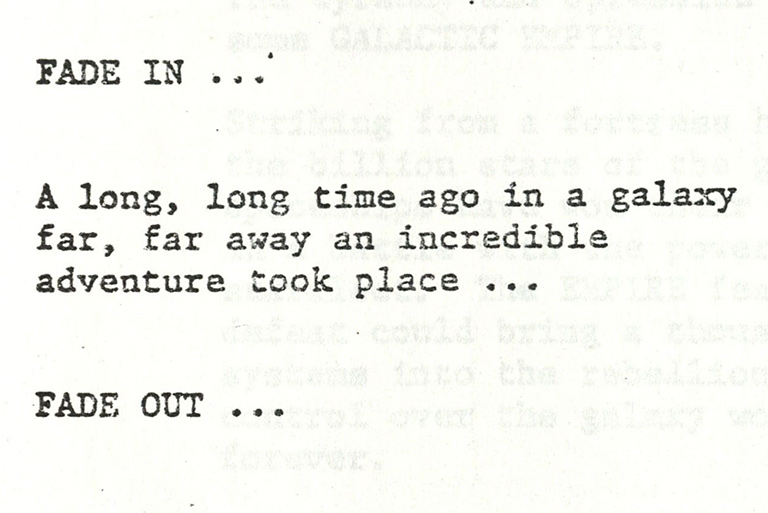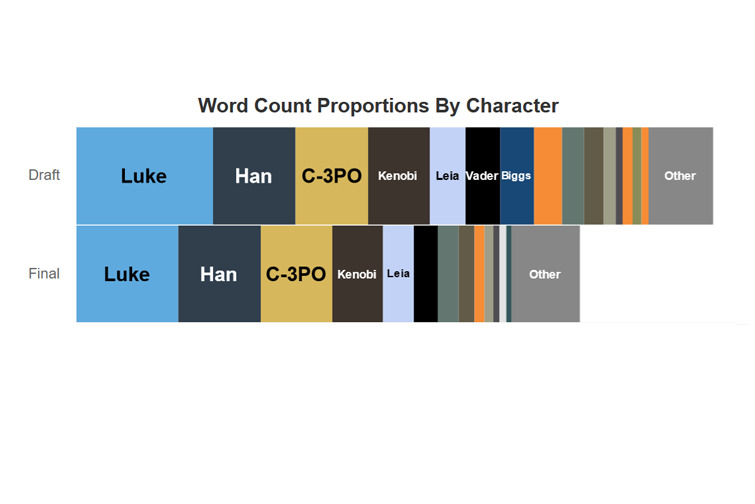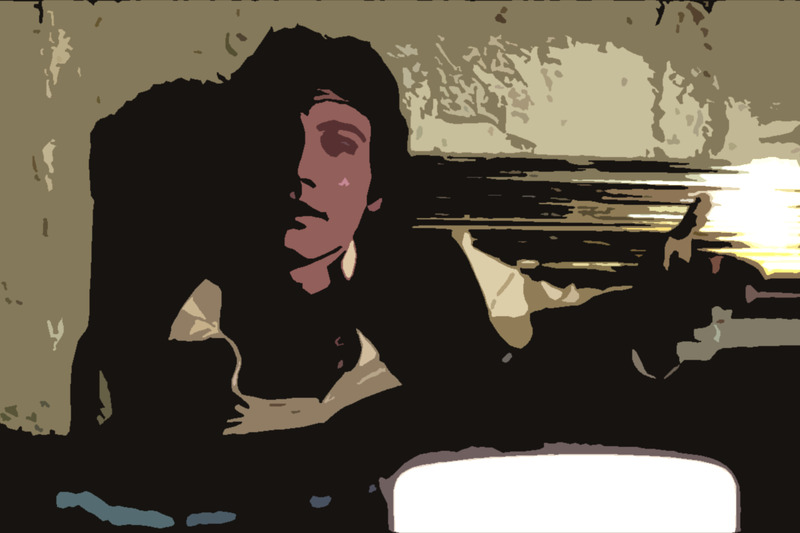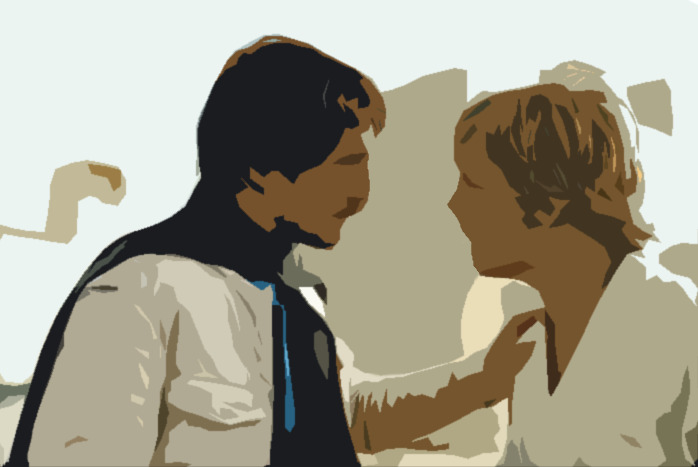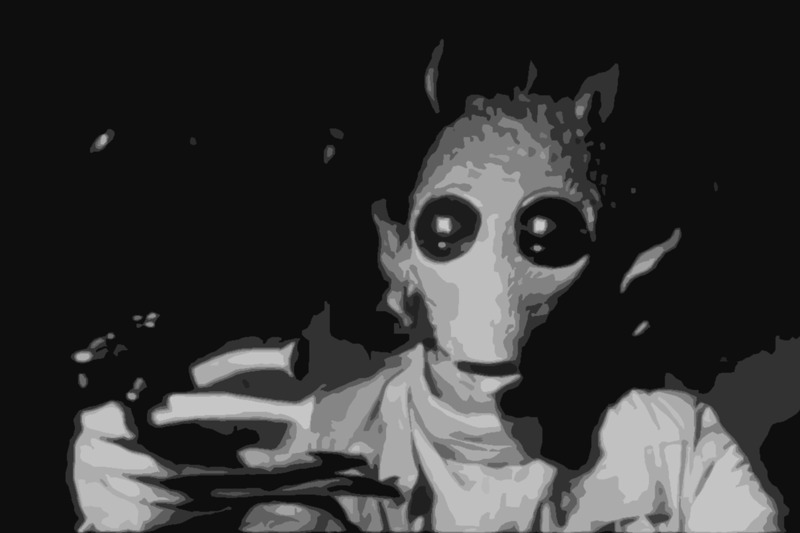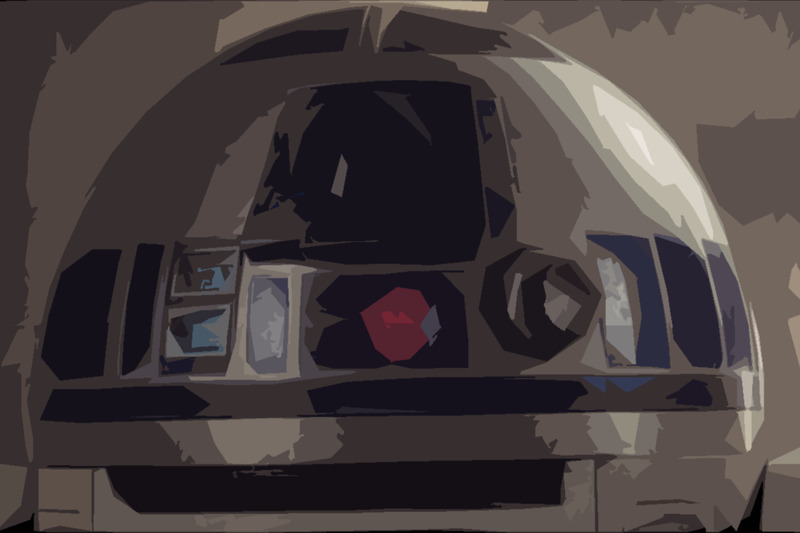Exhibit Contents
- Starkiller to Skywalker

Curated By Ben Ostermeier, 2022
The Star Wars media franchise is among the most significant of modern, global popular culture. The original trilogy, released from 1977 to 1983, played a significant role changing Hollywood’s focus from musicals and historical epics to blockbuster science fiction and fantasy films, a trend which continues to this day. The characters, themes, music, and dialogue of the films have become cultural icons, often representing the struggle between good and evil.
Yet despite, and in part because of, its ubiquity, Star Wars is not a stable text. This is particularly notable with the original film that started the phenomenon in 1977. Even the film’s title is unsettled – upon its release in theaters it was simply called Star Wars, for its theatrical re-release in 1981 it was retitled Star Wars Episode IV: A New Hope[1], and in some contexts the film has the shorter title Star Wars: A New Hope, which is how it is titled on Disney+ today. Furthermore, because of creator George Lucas’ love for film editing and tweaking, several re-releases of A New Hope in the past 40 years have featured changes both minor and significant, often to the irritation of various fans. Even audiences in 1977 would have experienced slightly different versions of the film depending on whether they saw it in a theater equipped for the then-new Dolby stereo system or the theater was still using a mono system.[2]
The variability of the original Star Wars film is the combined result of Lucas’ tendency to tinker and the tumultuous and miserable (for Lucas) production that created it. Describing and discussing all the different versions is too large a task for this exhibit, and indeed much of this work has already been done by both film historians and passionate fans.
Instead, this exhibit will focus on a particular production artifact that is part of the Rare book and Manuscript Library’s TV and movie script collection: the fourth draft shooting script for Star Wars from 1976, which is titled The Adventures of Luke Starkiller as taken from the ‘Journal of the Whills’. Saga I: Star Wars.
It is not clear precisely when or how this script came to be in the RBML’s collection. A note on the script’s intro page states that in June 1982, the script was transferred from the University of Illinois Library’s closed stacks to the ‘Rare Book Room,’ as RBML was known at the time. This means that this particular copy moved from the Star Wars production team to the library in the six years between 1976 and 1982. At some point, this copy of the script was bound in the library's brown hardcover to protect the pages and given the simple title Star Wars, but there are three holes punched inside the gutter of the script, indicating that it was originally bound using those holes.
Because of copyright, we cannot reproduce the script in its entirely online. You are welcome to visit RBML to see the script in person. Please see our Plan a Visit page for more details. The catalog entry for the script in the library's catalog may also be of interest.
Please also see this presentation by Dr. Cait Coker, RBML associate professor and curator, featuring the script and several other Star Wars related items from RBML's collection. This May 6, 2021 presentation was part of Realizing Resistance Episode II: Uncharted Galaxies, an interdisciplinary conference on the Star Wars universe, a Digital Frontiers satellite event.
[1] For an overview of the many minute differences between different releases of Star Wars, see Wookieepedia contributors, “List of changes in Star Wars re-releases,” Wookieepedia, The Star Wars Wiki, https://starwars.fandom.com/wiki/List_of_changes_in_Star_Wars_re-releases?oldid=11128681 (accessed December 11, 2021).
[2] While the visuals were the same for the Dolby mix and the mono mix of 1977, Lucas, sound designer Ben Burtt, editor Paul Hirsch, and others made several adjustments to both dialogue and sound effects for the mono mix, which they finished after the Dolby mix. This article lists many of the differences between the two versions.
